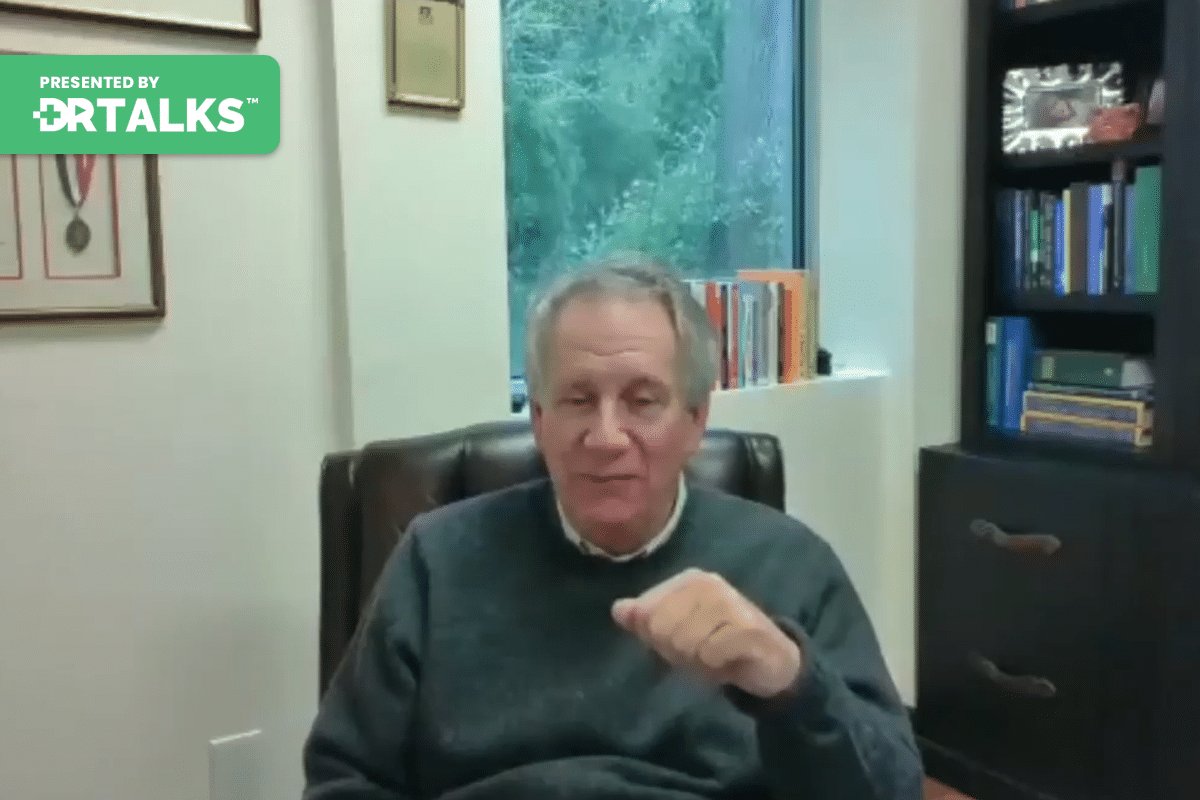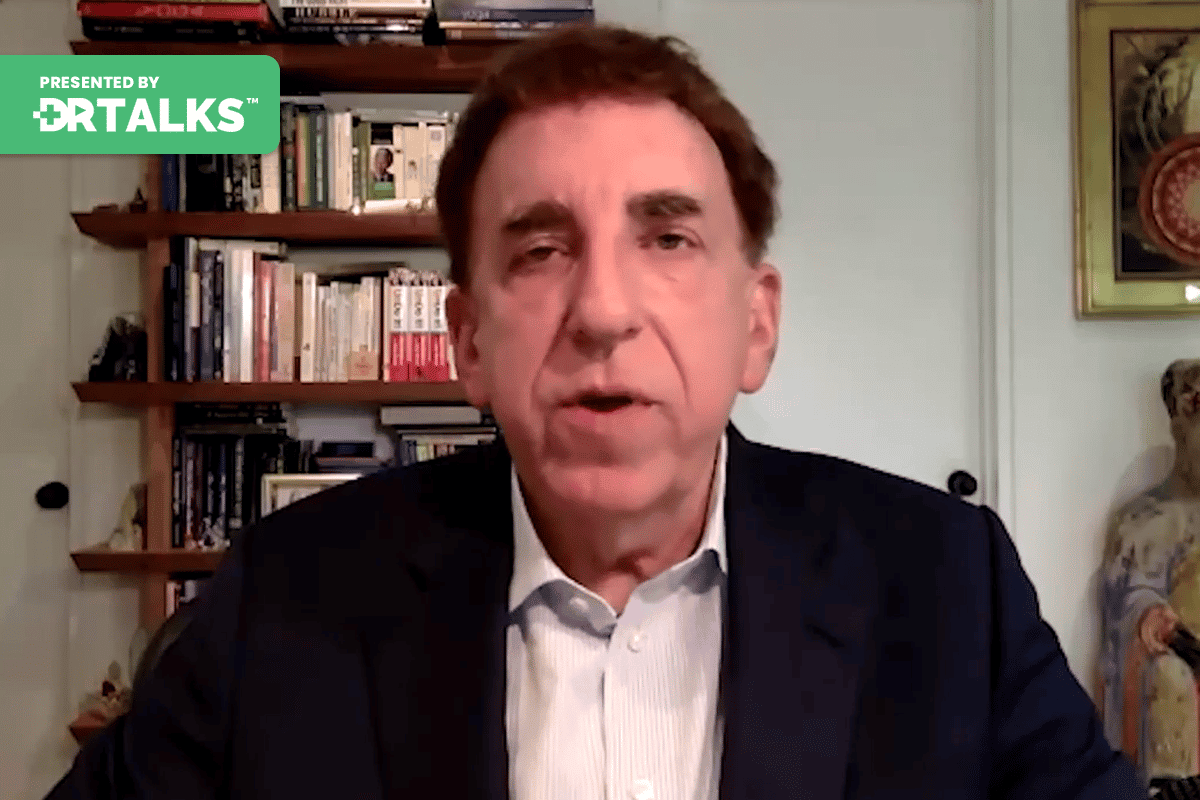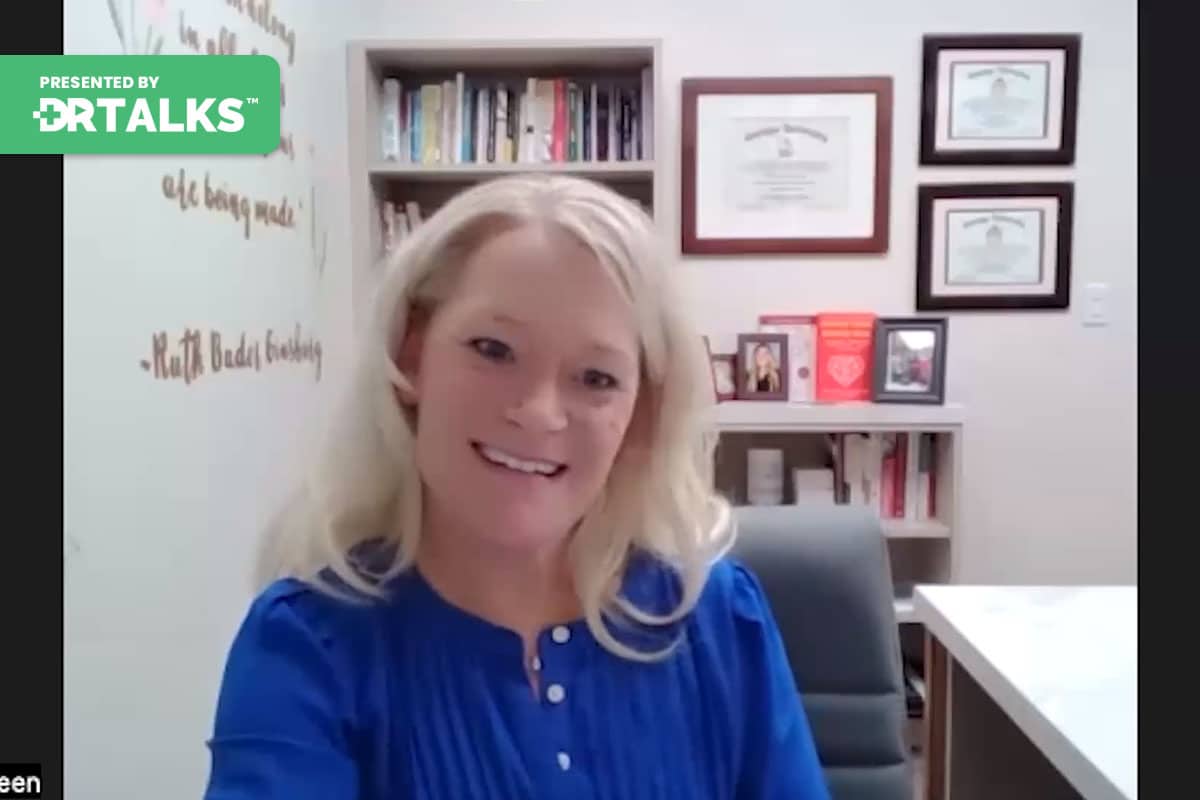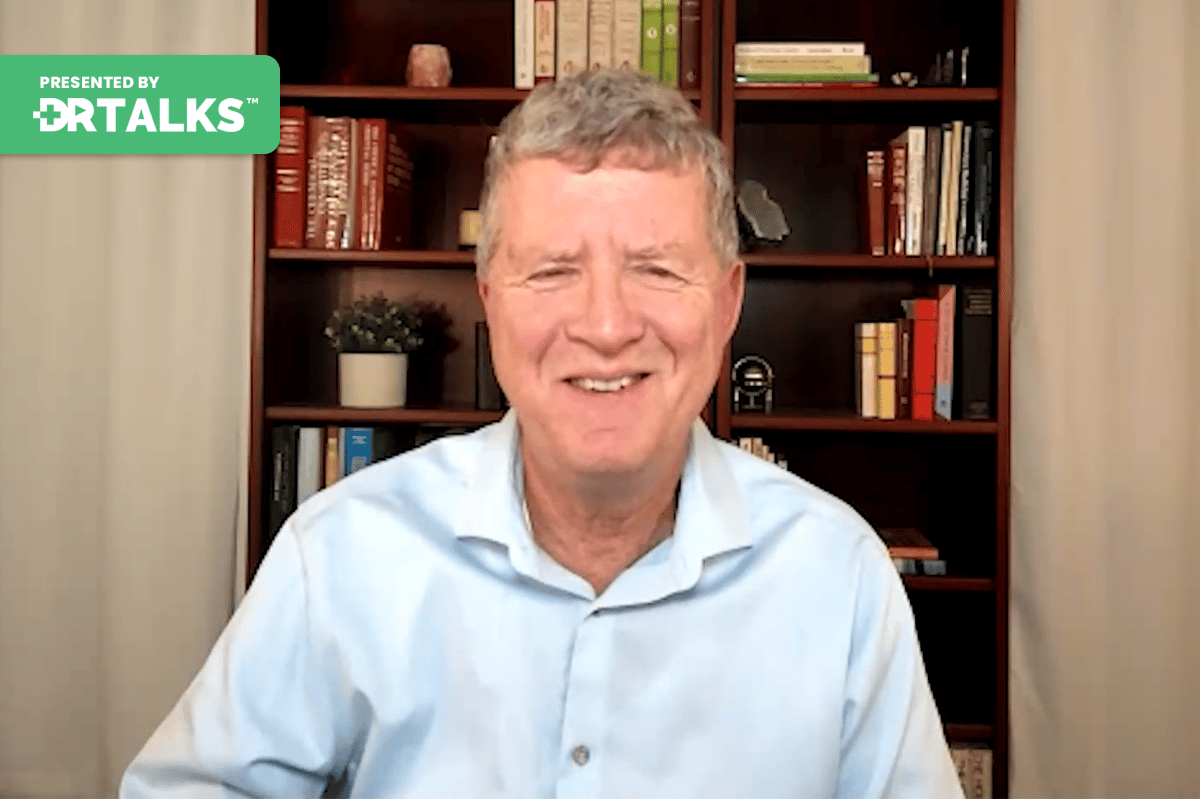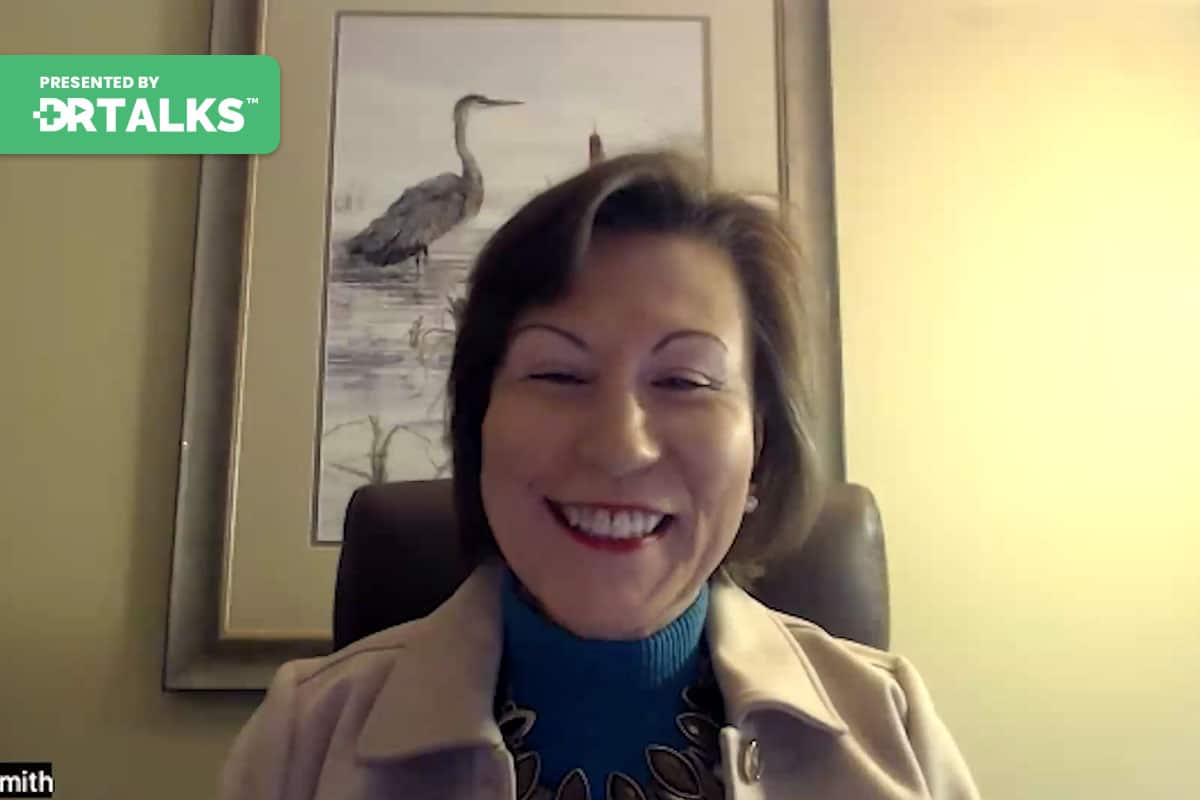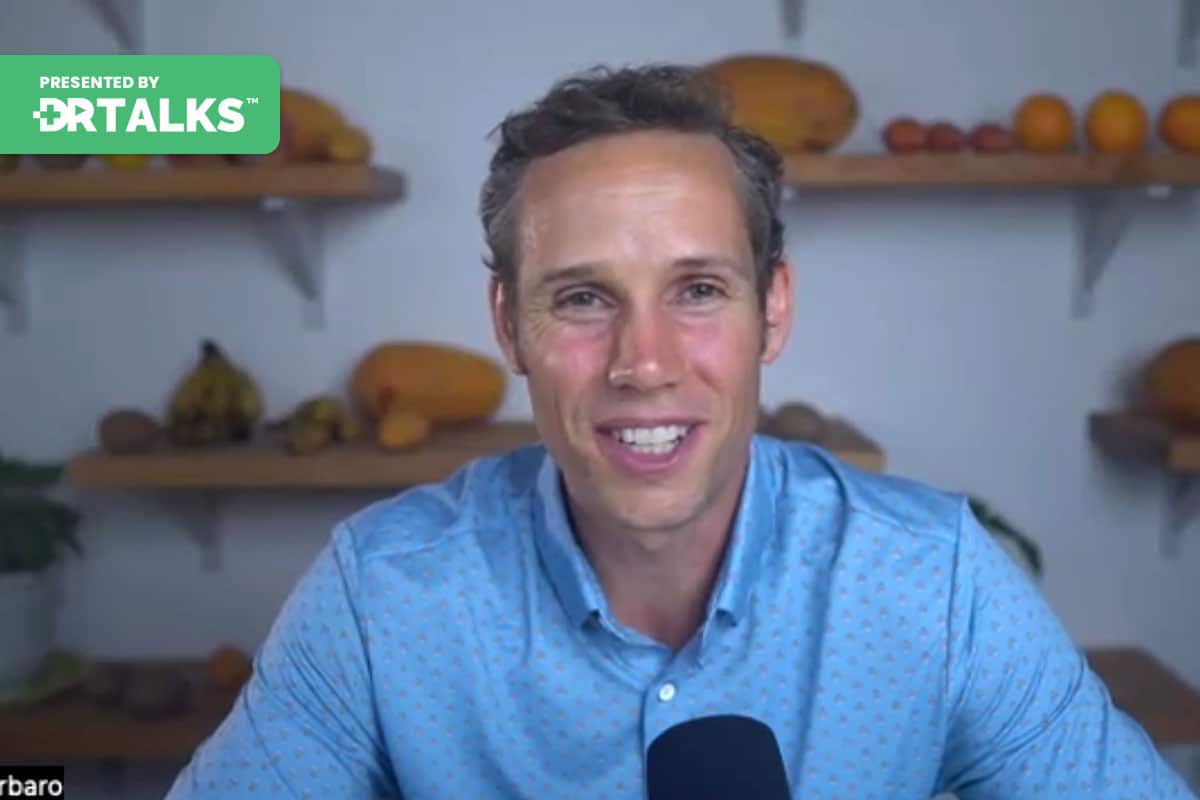Join the discussion below
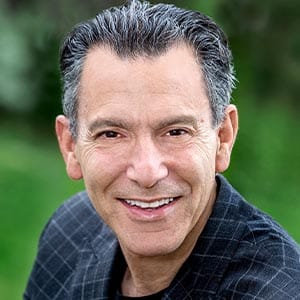
Joel Kahn, MD, FACC of Detroit, Michigan, is a practicing cardiologist, and a Clinical Professor of Medicine at Wayne State University School of Medicine. He graduated Summa Cum Laude from the University of Michigan Medical School. Known as “America’s Healthy Heart Doc”. Dr. Kahn has triple board certification in Internal... Read More
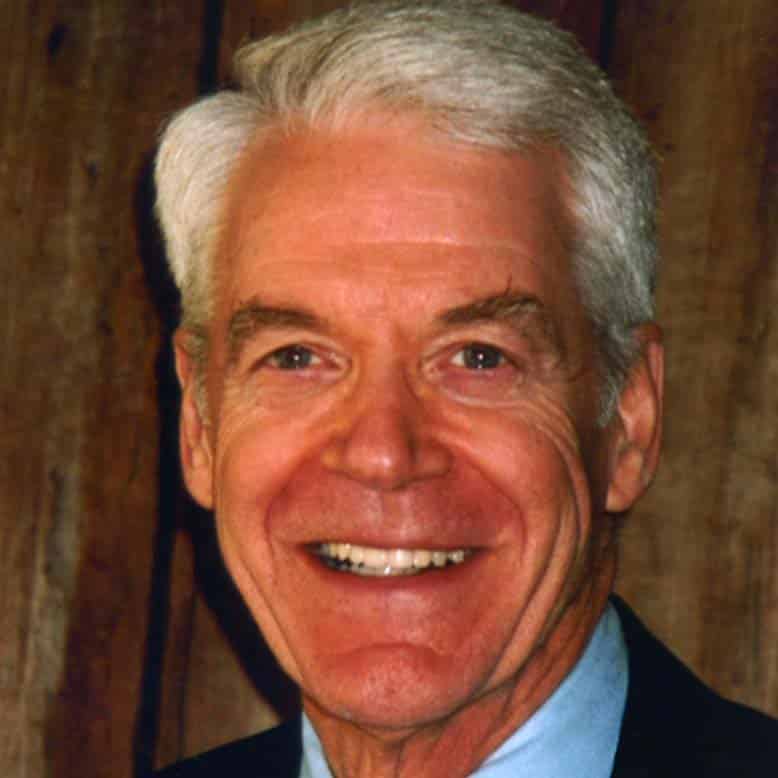
Caldwell B. Esselstyn, Jr., MD
Caldwell B. Esselstyn, Jr., received his B.A. from Yale University and his MD from Western Reserve University. In 1956, pulling the No. 6 oar as a member of the victorious United States rowing team, he was awarded a gold medal at the Olympic Games. He was trained as a surgeon... Read More
- Dr. Esselstyn established a program at the Cleveland Clinic for the “walking dead” heart patient with no option and studied a whole-food plant diet on their outcome
- Within weeks, symptoms and PET scan measurements of blood flow improved and follow up angiograms showed heart disease reversals
- The diet supports maximal nitric oxide production in blood vessels and in the mouth and is backed by the latest cutting edge science
Joel Kahn, MD, FACC
Alright, everybody, welcome back one of the most exciting interviews we’re gonna have in this amazing week, reverse heart disease natural summit. Thank you for being here. You will be glad you’re here. Let me introduce somebody who actually needs no introduction, but just in case somebody isn’t aware. Dr. Caldwell Esselstyn Jr. Graduated from the Yale University School way back 1956 Medical degree. Western Reserve University School Medicine 1960 won a gold medal at the Olympic Games in 1956 for rowing some just incredible video I’ve seen played by his son rip army surgeon in Vietnam awarded a bronze star. Everybody please salute Dr. Esselstyn trained as a surgeon at the Cleveland clinic. Met Beautiful and Crile, whose grandfather founded the Cleavage Clinic and whose father was a famous, if I’m correct breast surgeon where Dr. Esselstyn ultimately rose to be chairman of the breast cancer task force and head of the thyroid and parathyroid disease surgical unit at the Cleveland clinic, compassion and medicine distinguished alumnus award. But this is a surgeon who cares about nutrition. I mean there actually are some and he became so caring about nutrition that it has been his passion since 1985 clinical research. He’s been awarded lifetime achievement awards by the Plan Trish in project American cause of lifestyle medication, very highly published and perhaps of all things besides his sparkling an amazing wife and Author uh and is his book, prevent and reverse heart disease, published in 2007. A book, literally hundreds of my patients walk out of my office with copies of its their homework they have to read. I don’t know, I could go out and on and just introduce you doc but shouldn’t we just say good morning and hello.
Caldwell B. Esselstyn, Jr., MD
Thank you, Joel.
Joel Kahn, MD, FACC
Well, you know, you’re a humble man but you deserve all the praise that is showered on you. You should run for president. I don’t think there’s a flog I guess. I guess you’d be the oldest candidate even though we got some pretty old candidates. Right? Yeah. I mean I won’t I won’t reveal your age, but it’s double numbers and it’s not 77 and you look and I have amazing zest. So we’re here to talk about reversing heart disease naturally. And I mean, tell us a little bit just because it’s so interesting. I mean, your uh incredibly compassionate breast surgeon, thyroid surgeon, parathyroid surgeon. But you cared about blood vessels. And how much did Rene Favaloro by chance play into that. You know, perhaps the most famous heart surgeon in the world at the time for doing bypass surgery.
Caldwell B. Esselstyn, Jr., MD
Well, I first got to know Rene Favaloro a when he first arrived at the Cleveland Clinic, he had been in the private practice of general surgery for 10 years and uh Argentina when he decided he wanted to expand his surgical horizon and learn about cardiothoracic surgery. And so he came to the Cleveland clinic to be under the tutelage of Don Effler was at that time the chairman of cardiothoracic surgery at the clinic. And it was in July of 1963. That just happened to coincide. I was a that was a rotation that I was taking in general surgery was in cardiothoracic surgery. And it was at the same time that caballero started his residency at the clinic in Cardiothoracic surgery. So we got to be really quite good friends. He was an absolutely delightful man. He had a wonderful set of hands. He had a very creative mind and he had all of the milk of human kindness. And I was only with him for three months because that was my rotation through cardiothoracic. But he stayed for the full two year rotation, he went back to Argentina and at that time they said well what do you expect us to do with you? You went up there and you learned some things from Dr. Effler and Europe, you think you’re a big deal. Well that wasn’t a very nice reception for him back in his home country. So he was so able and so delightful and so treasured at the clinic that the clinic asked him to join and he became a full staff member in the Department of Cardiothoracic surgery in 1965 and it was while I was in Vietnam in The spring of 1967 back in Cleveland.
It was rather fascinating what happened. I should give it a little additional background because at this time nobody was operating on coronary arteries. But the clinic was a shrine. An absolute shrine for people coming to understand what their coronary arteries looked like because it was just through a a bit of absolute serendipity. That mason Stones Who who in 1958 was the chairman of the Cleveland clinic catheterization laboratory at that time. They were just doing catheterizations for the we’re looking at valves so they would have this bolus of dye that would go into the ventricle. And it was felt that if you ever put dye into the coronary arteries you would kill somebody because they would not be getting any blood. well what happened to fortuitously was one day in 1958 when Dr. Jones was looking at the image amplifier, his associate had the plunger ready to put the inject the dye and so on said go ahead and they rejected to die. None of it went into the ventricle. It all went into a coronary artery.
Stones looked at the E. K. G. And it was flatlined so he yelled at the patient to cough. The man coughed and suddenly that brought back sinus rhythm. But zones was brilliant. He said if we used much much much less die and if we really decrease the concentration of this uh we can do this safely. And that’s when absolutely everybody was coming to the Cleveland clinic from around the world to get this road map of their coronary arteries for which there was absolutely no therapy, there was no surgery and there was no no medication that would help it. So here was Cavallaro. Now we’re advanced from 1958 back up to 1967. He’s operating on this patient. He’s seen the films while he’s operating on the patient’s heart. Suddenly it turns blue, he yells at his team prep the leg, they prep the leg, harvest the vein, he sold the vein on around this blockage, the heart pinks up again. Coronary artery surgery is born and then on mason stones. Just he loved caballero and he just fed him case after case after case after case. And really caballero was fluent in English, he was fluent in Spanish and French and Italian and he was considered this such a leader in surgery that any country that he visited to present his data, they were so flattered that he could speak usually some kind of common language.
Joel Kahn, MD, FACC
You ended up if I remember the story due to construction, you ended up sharing a surgical locker with.
Caldwell B. Esselstyn, Jr., MD
That’s what happened next because when I got back from Vietnam and was offered a position at the Cleveland clinic department of general surgery. The surgical locker room was filling up so they no longer could put one surgeon to one locker. They did it, they doubled herself alphabetically and Esselstyn was next to Rene Favaloro. So for the next two years we were together when what happened was the chorus from Argentina was so loud to bring caballero back to Argentina. He couldn’t resist. And he went down there and finished his career.
Joel Kahn, MD, FACC
So you were operating on. And for anybody listening that says that’s a bunch of history. You know, we can’t really talk about reversing heart disease naturally if we can’t measure heart disease. So hearing what we just heard, which is such a beautiful history of coronary angiography, accidentally identified as a technique that could be done safely. In most cases it led to bypass surgery. Ultimately angioplasty with Dr. Gruegzig and Switzerland and ultimately stenting with many operators around the world, including myself. If you didn’t have the road map, you couldn’t do it. And now we have CT scans and I think the future of cardiology research already as quantitative CT scans of which perhaps, you know, Dr. Esselstyn. But we interviewed Matthew Budoff, one of the world experts interviewed James Men, these are people publishing large, you know, trials on ct angiography and reversal of plaque.
And I think if you were to do it all over again in 1985 and we had CT angiography for $500. It could have had every patient got a pre and post, you know, quantitative measurement. But I’m humbled, I reread your book last night. I’ve read your book many times, but I reread it last night and I did not recall the introduction of Colin Campbell, Dr. Colin Campbell at Cornell. Everybody probably recognized in the China study that in 1991 I mean I’m humbled, we’re talking here 2023 About reversal of heart disease. You had a conference in 1991, the first national conference on the elimination of coronary artery disease. That’s a big bold Moonshot. That’s the terms of my friends use a Moonshot. I mean where did a thyroid and breast surgeon ultimately organized a conference on eliminating heart disease? And sadly we got work to do, which is why we’re having this summit.
Caldwell B. Esselstyn, Jr., MD
Well just by that time I was beginning to get data and by that time I had also heard of and had met Dean Ornish and uh just to me it was so colossal to think that you know, that we had absolutely hard evidence that when we could get people to change their nutrition to whole food plant based nutrition and they could halt and reverse coronary disease, the world really should know about it. But there was nobody with all due respect, there was nobody in cardiology who seemed to have any interest in this because Dean was not a cardiologist and I was a general surgeon. So I found a uh actually it was a small foundation in memory of my father that we got some funding and we put together this conference we had about 100 people attend but we had a really a blue ribbon panel alexander leaf was there from Harvard Dean Ornish was there Colin Campbell was there? These are just people that I had read about and I called and they were willing to come and be part of the conference. And it was very disappointing to me that this didn’t light up some fires around the world. And so I once again I said I’ll do this another time. So in 1987, this time down in Disney with 500 health care workers and physicians and surgeons, we had another blue ribbon panel and uh it was very exciting too to do this a second time. But then I said this is crazy for a general surgeon to be doing these, these heart conferences and gradually after that it slowly did begin to pick up
Joel Kahn, MD, FACC
And obviously your book 10 years later in 2007 Dr. Ornish’s book in 1990 others, you know, and made it more accessible. But people today are listening to your interview and are saying, I’ve never heard of Dr. Esselstyn, isn’t that amazing to you? Yeah, I mean, you’re probably the most loved social media nutrition physician in the world. I would actually say that that’s true in the plant based world and I’m glad we’re bringing your wisdom. So again, Reread your book last night, 1985, you get an agreement by some cardiologists and cardiac surgeons at the Cleveland Clinic to give you what you called in your book, the walking dead. Those that couldn’t get bypass surgery. And by 1985 we did have crude angioplasty. But some people weren’t candidates. And as you said, they couldn’t walk to the mailbox without limiting symptoms. None of the men had erectile function left in their repertoire. And you and and designed a study to look at the whole food plant based nutrition on sims, Status Pet scans or nuclear scans. Many of them got angiograms before and after. I mean, was this all extra time in your life? I mean, you were still a surgeon. I had.
Caldwell B. Esselstyn, Jr., MD
Yeah, this is why the study was small. It was 24 patients originally. And because of my Surgical obligations, it couldn’t really be much larger. That was the restraining factor. But when I retired from surgery about 21 years ago, I was then able to, yeah, I stopped surgery about when I was 85. I was seven. Let’s try it again. I stopped searching when I was 65. And uh, now and I got rehired by the clinic to work in the wellness Institute. And I put together a format that I’m still using today where once a month it used to be in person. But now it’s all virtual. Once a month I counsel approximately 20 patients who have cardiovascular disease. And these are patients that are self referred. And since I’m a little bit old fashioned and compulsive, my secretary will give me there name and phone number two weeks before my monthly seminar.
And I will personally call each of the patients though I can get my arms around their story and at the same time provide them with an opportunity to ask questions of me. So they’re coming to the seminar. We have a strong platform from which we can all move forward. And the seminar itself is five as 5.5 hours And they’re going to learn all about how they created their disease and precisely how we are going to empower them as the locus of control to halt and reverse their disease. So that’s…
Joel Kahn, MD, FACC
1985, you enrolled 24 patients and I told them, you know, trust me work with me, work with my wife and it really was all nutrition. Although you did play some of them on call this Tyramine and lovastatin prescription drugs that lower cholesterol. What was talked about what was your you know, it’s now the norm in cardiology to talk about ultra low cholesterol levels as a reversal platform. It’s controversial in a few segments of the medical world but it’s not the norm. The norm is low cholesterol and an adult is an advantage. But you saw this so much earlier than everybody else. What was the goal cholesterol and the goal LDL.
Caldwell B. Esselstyn, Jr., MD
As you may have seen and maybe the some of the presentations I give, I showed the numbers, the cholesterol numbers on that original group they were averaging of total cholesterol was somewhere around 135-140 and their LDL was averaging 80. And and then of course the HDL was around 37-38, But with all due respect to cholesterol, when I’m more and more impressed with, because, for example, coming to my seminar, there will be patients who were discovered long before they found me that they simply couldn’t take a statin.
And yet, when they’ve gone through the program, some of the most and you’ve seen this in the book, some of our most profound evidence of disease reversal was in patients who simply could not take a statin or it happened before we ever had statins invented. We had several profound reversals in the leg, for example, in the one of those patients. So it was it’s really uh to me, I guess, I don’t feel that any number has ever caused heart disease, what causes heart disease is what is passing through people’s lips every day, That destroys their endothelial capacity to make that magic molecule of nitric oxide, which is responsible because of its multiple functions for protecting us from making blockages in black.
Joel Kahn, MD, FACC
That’s a profound statement. I hope everybody just heard that endothelial EUM, the 50, miles of lining of arteries throughout the body I read yesterday that there’s 400 miles of arteries in the brain. I thought there would have been more than 400 miles in the brain. That leaves, you know, tens of thousands of miles in other parts of the body. It’s universal. And it has to have a lining that makes nitric oxide. So I know your program has changed a little bit from 1985 in terms of now it’s completely no dairy and such. What would what would be, Let’s get practical for a minute there. I don’t want to get too practical. I like that. We have a real dreamer here who’s really brought a dream to reality. And everybody listening to benefit. What would a breakfast be like for the, for the patient that you talk to on a monthly Friday zoom call now. What’s their breakfast looking like?
Caldwell B. Esselstyn, Jr., MD
Well, I’d like them to have some type of old fashioned boats, old fashioned Quaker oats with perhaps a few reasons can have a banana and I really like to have, if possible, four different types of fruit, raspberries, blackberries, strawberries, and blueberries and some flax seed meal. A couple of tablespoons or it can be chia seeds and I think to wet it down to wet it down a plant based milk.
Joel Kahn, MD, FACC
And I think you’re pretty famous for adding some steamed greens into that old meal.
Caldwell B. Esselstyn, Jr., MD
Oh, no, Well then we’ll come to that. I didn’t know you were.
Joel Kahn, MD, FACC
No problem. Okay, beautiful bowl of oatmeal,
Caldwell B. Esselstyn, Jr., MD
Since I, since I have this great fondness for nitric oxide. I made two modifications in the program about a decade ago and that was one was a great a see if we couldn’t achieve a greater stimulation Of the endothelial production of nitric oxide, which is, we all know is age dependent. That is to say you don’t ever see heart heart attack and an eight year old boy or girl because they have nitric oxide coming out of their ears. But by the time they’re beautifully healthy at 50, they’ve lost 50% of their nitric oxide that they had when they were 25 and by the time you’re 80 you’ve lost 70%. So we tried to have a greater stimulation of nitric oxide, which I’ll mention in a moment. And the other important thing we did was to take advantage of the newer research that shows that mankind has an additional method, additional method of making nitric oxide. So here we go. I need them jewel to have to chew six times a day. Not smoothies, not choosing, I need them to choose six times a day.
A green leafy vegetable that is approximately the size of half of their fist after it has first been steamed 5.5 to 6 minutes when it’s then nice and tender. And then they must anointed with several drops of a delightful balsamic or rice vinegar. Why? Because research has shown us that the acetic astra from those vinegars can restore the nitric oxide synthesis enzyme which is contained within the endothelial cell and responsible for making nitric oxide. So they’re going to chew this alongside their breakfast cereal. Again, there’s a mid morning snack again with their luncheon sandwich, that’s three, mid afternoon four dinnertime five. And of course I adore it when they have that evening snack of arugula or kale. Now the second benefit that comes from showing the green leafy vegetable, it restores the capacity of the bone marrow to once again make the endothelial progenitor cell which is responsible for replacing our senescent, injured, worn out endothelial cells.
The third and most important benefit when you’re chewing a green leafy vegetable, you are chewing a green nitrate that green nitrate is going to mix with the faculty of anaerobic bacteria that reside in the crips and grooves of your tongue. Those bacteria are going to reduce the nitrate to nitrite and when you swallow the nitrite, it is now your own gastric acid which is going to further reduce the nitrite to more nitric oxide which can enter your nitric oxide pool. So think about it what you’re doing for minimal expense, no hideous side effects all day long, dawn to dusk. Morning. Tonight you are absolutely replacing the very molecule nitric oxide, the deficiency of which gave you this disease in the first place. Now there is a caveat toothpaste with fluoride or public drinking water with fluoride and mouthwash will injure the beneficial bacteria in your mouth and I do not like antacids because antacids will decrease your gastric acidity and you were unable to decrease the nitrite, two more nitric oxide. Now the top six vegetables would be kale, swiss, chard, spinach, arugula, baby greens and beets.
Joel Kahn, MD, FACC
I hope everybody wrote that down. There was such an incredible, beautiful scientific dissertation. Nobel prize winning dissertation in 1998 regarding nitric oxide. And what about I want to read a quote from your book, but doc I just don’t like oatmeal. I I can’t get off my cheese omelet. I got to read a quote for a minute. It goes back to that goal you have. But it the quote is and it’s two sentences. I have an ambitious goal. This is D. Caldwell Esselstyn words not Joel concert to annihilate heart disease to abolish it once and for all your arteries at the age of 90 out of work as efficiently as they did is when you were nine. My nutritional program is strict and allows no shortcuts. I’m uncompromising. I am authoritative but I always tell my patients I am a caring presence.
I want to see people succeed and if they share my vision, they will and of quote sort of like Walter company with kale but for those that are really historians of nutrition and health research. I’m sure you know you mean you had a lot of contact, you still have a lot of contact. You’re very kind and send me patients and they all tell me they’ve so enjoyed the conversation they had with you. You know, tell me what, we don’t allow any Esselstyn heart disease reversal or it’s not just heart disease because it affects like disease and sexual organ, blood flow disease and brain disease. But we don’t do anything that injures the endothelial. So why don’t you share that list with us?
Caldwell B. Esselstyn, Jr., MD
Well, yeah, the no nos. What are the foods that every time they pass your lips, you injure the endothelial. Any drop of oil, olive oil, corn oil, soybean oil, south oil, sunflower oil, coconut oil, palm oil oil and a cracker oil and a chip oil and a piece of bread oil and a salad dressing oil is a killer. Also. We want nothing that has mother or face no meat, fish, chicken fowl, turkey or eggs. Also. Nothing that is dairy, milk, cream, butter, cheese, ice cream and yogurt. I don’t like sugary drinks, Diet cola, Pepsi and coke. I don’t like sugary foods, cakes, pies, cookies, stevia, agave excesses of maple syrup and not have money and I don’t like nuts, peanut butter, nut butters, cashew sauce, avocados and lastly no coffee with caffeine, decaf, Yes, but coffee with caffeine. No,
Joel Kahn, MD, FACC
There’s lots of great substitutes. I’m drinking dandelion coffee substitute right now that some of you may know and decaf coffee, but so avoid anything that injures endothelium and provide all the nature’s bounty that heals and supports endothelium.
Caldwell B. Esselstyn, Jr., MD
Well then we yeah, we want them to eat whole grains, whole grains for their cereal, bread, pasta, rolls and bagels, 101 different types of legumes, lentils and beans, all those marvelous red, yellow, green leafy vegetables, white white potatoes, sweet potatoes and fruit. And then I and then I mentioned the greens six times a day
Joel Kahn, MD, FACC
Maybe share with because people are saying sounds tough, although we already I read that quote about you being authoritarian because you do know what you know.
Caldwell B. Esselstyn, Jr., MD
Let’s let’s joe, let’s talk, what is the, what is that? What is the tough and the most radical and the most draconian diet on the planet, the one that 98% of Americans are eating every day, that guarantees that they’re gonna have illness.
Joel Kahn, MD, FACC
I couldn’t agree more. And I think it’s it’s a real statement you made that for a lot of people changing their diet as Margaret mead said is tougher than changing your religion, their cheese addicted and their family is not supportive and You made an honest and strong statement that people embarking I anybody listening that took 70 years to clog their arteries and think it’s going to be easy to go the other direction. It’s a massive transformative process, but it boils down to simple food that you and Ann have done so much. I do want give a shout out, we’re not done. But I want to give a shout out very close to your left is your delightful wife and and and and you’re amazing daughter Jane just published another book. Be a plant based woman warrior live fear stabled. Eat delicious all over Youtube and Instagram. If anybody wonders if you can have delicious, colorful nourishing food on this program, you need to check out and James ‘ new book along with the 150 just epic recipes in your book that and your subsequent cookbook too. So let me this is, this is not a spartan diet. This is an incredible diet. Right?
Caldwell B. Esselstyn, Jr., MD
Let me ask you a couple of questions to you here. I’ve uh, I maintain that every patient that you’ve ever seen for heart disease, every patient that I’ve ever seen for heart disease, any patient, whoever has heart disease at one time their vessels were normal.
Joel Kahn, MD, FACC
We agree.
Caldwell B. Esselstyn, Jr., MD
And we have known for over 100 years that there are multiple cultures on the planet earth where heart disease is virtually nonexistent.
Joel Kahn, MD, FACC
Also agreed.
Caldwell B. Esselstyn, Jr., MD
And why is it? That is brilliant as we think of ourselves as physicians in this country since the American Heart Association was formed in 1924. The American College of Cardiology in 1949, 88,000 members, brilliant people. All these things that they’re doing today for heart disease. We use carvedilol, we use load up in, we use statins, we use all these drugs and we use stents and bypasses. Tell me Joel does absolutely any of those things that I’ve just mentioned have one single solitary thing whatsoever to do with the causation of the illness.
Joel Kahn, MD, FACC
No sir. We’ve completely failed the public. I couldn’t agree with you more.
Caldwell B. Esselstyn, Jr., MD
100 years. We’ve known these civilizations that don’t have disease. Why couldn’t we just bring that information to this country and say, look, this disease doesn’t have to exist.
Joel Kahn, MD, FACC
Well, you said it strongly from 1985 on and you know, fortunately millions of people have listened and learned, but you’re right. We got billions, we’ve got work to do. We’re going to reach a lot of them with this conversation, which is so meaningful. And um tell maybe in the last couple of minutes, I I always love a case study. You’re famous, famous Joe Crow. Tell us just a little bit about, you know, That story and what resulted so people listening can actually believe, you know, decades ago, this work that’s gonna work in 2023 to but tell us that.
Caldwell B. Esselstyn, Jr., MD
Joe Crow was the first chapter of my book. And Joe was a breast surgeon at the clinic and a good friend in 1996 at age 44 he began getting chest pain. He was not overweight. His cholesterol was 156. He had no strong family history. He was not diabetic, he was not hypertensive and uh it was really rather puzzling. So that in October of that year he went to cardiology. They gave a full work up and they gave him a green light. No there was nothing they could see that was abnormal. A month later he was finishing his uh he actually had finished surgery and was writing postoperative orders. When he suddenly the elephant was sitting on his chest, he had pain in his jaw, left jaw, shoulder arm. He was having a heart attack. He was whipped down to the cath lab. They start the catheterization, cardiac arrest resuscitated, finished the catherization.
One more cardiac arrest resuscitate. And then he was discharged after he stabilized up to the floors and discharged four days later. But boy was he depressed and he was depressed because when you looked at the angiogram, the entire lower one third of his left anterior descending was on moth eaten and diseased over too long a segment. But you just can’t ram in stand after stand after stent and it was too far down the artery to have a bypass. So he was really pretty depressed about the fact and two weeks after his heart attack. And I had him with his wife out for supper, Joe come on. You’ve been eating this horrible Western diet. You’ve got the typical Western disease. We’ve got 10 years of data. Why don’t you think about giving it a shot going with plant based. He said, well I guess I will because he said they couldn’t offer me into anything else. And I’m not going to take those statin drugs. I just refused. There’s just too many side effects. I said fine. That’s your call. He became the absolute personification of commitment to whole food plant based nutrition
And over the next 2.5 years his total cholesterol plummeted as LDL went from 98 to 38 and then he had another angiogram and in the surgical office areas our doors are about three doors apart. So at noontime on the day that I knew earlier that morning he had his follow up angiogram. I walked over at noontime, walked in and knocked on his door and walked in there. He was sitting behind his desk and I said joe, I understand you had the follow up angiogram. Would you mind sharing with the uh how did it go? So he got up from his desk, came and put his arms around me and said, I think we’re doing okay. And I took a look at his angiogram and it was the disease was gone. And that was really pretty exciting. That was uh early on in this business. And it uh it really it followed up what we found earlier that we now have about five or six angiogram pictures of profound reversal, which are quite exciting and quite stunning. But Joe was really at the forefront and in uh in helping us get that information.
Joel Kahn, MD, FACC
And as your publications have shown before, you might see in an angiogram visual reversal of plaque uh symptoms may resolve sexual function may improve and stress tests may document massive improvement in blood flow. So we have the technology and you’ve proven it works. And your colleague Dr. Ornish has proven using technology it works. But sometimes it’s four weeks later, they’re just feeling so much better. There’s no doubt.
Caldwell B. Esselstyn, Jr., MD
I think you know, I think you make a key point that I’d like to stress because we have in our book and maybe you’ve seen that the pet scan And the pet scan is beginning to reverse literally in three weeks. And how does that happen? And that I was very curious about this. And so I talked to uh I asked Rodriguez, who is chairman at the Cleveland clinic department of cardiovascular pathology, who dissects 200 hearts a year from the deceased. And I asked him, I said, how often do you ever see plaque develop in the coronary artery once it has dived into the muscle? His answer never. Never. Maybe rare. Very, very rarely in a severe diabetic. But other than that, not there. Now I have the answer. How did we know that in three weeks you have we haven’t gotten rid of the plaque that doesn’t happen.
Why does the re perfusion occur in that short of time. Because when we are first seeing those patients, their endothelial cells are so beaten up their train wreck and they’re hardly making any nitric oxide. And the endothelial um has become your enemy. It is now making two molecules of iso constriction, endothelial and from boxing and endothelial from boxing had taken that entire coronary vascular tree, that’s inter muscular and it’s all crimped pinched and so as soon as they really make this dramatic change and they’re no longer eating anything that’s going to hurt there and with helium, but it starts to recover, they begin making nitric oxide, the great vessel dilator and they no longer are making endothelial in and from boxing, the basal constrictor.
So suddenly what happens is within three weeks or 4, 6, 8 or 10 days. They used to walk to two blocks before they got chest pain. Now they have to walk 4 to 6 blocks before they get any chest pain. It’s so dramatic and so exciting. And it’s my careers. And I also, one other thing I would like to mention is that I’m almost of the opinion now that practically anybody who has been asked to have stents or bypass should be given an opportunity first with wolf food plant based nutrition to make this dramatic to change because we have seen patients with both with two of their major coronary artery is 100% block and 3rd, 70% block literally living on those collaterals, they can hardly walk across the living room. We’ve sent them absolutely turn it around. I don’t mean to open up 200% blocks but opening up enough circulation so that they don’t, there’s no need for them to have surgery or bypass.
Joel Kahn, MD, FACC
Very controversial statement. I actually agree with you. I counsel patients as an active clinician on exactly that option they have. But it takes the approach that I read the quote from your book. They have to go all in. You can’t avoid bypass by putting your toe in the water of the Esselstyn reversal program. You just got to do it and enjoy it. And we have, you know, you’re speaking science after the multimillion dollar courage trial and then the multi $100 million ischemia randomized study. We know if you, I tell patients if they discharged you you don’t need bypasses and stents, you were well enough to go home and change your diet. You know, if you’re kept in the hospital and ivy nitroglycerin, you might actually be unstable enough. Where that would be an unwise decision. You’ve got surgery and stents scheduled in two weeks, you have the opportunity to heal yourself with nutrition. So we’re one of…
Caldwell B. Esselstyn, Jr., MD
Joel isn’t there to help me out with this. Wasn’t there another study orbiter.
Joel Kahn, MD, FACC
Yeah. The orbiter trial, right? The sham stent trial in England where people felt as well with a sham procedure as they did with an actual stent. Now I’m a stent trained cardiologist and you know you and I agree you’re having a heart attack or you’re in the emergency room with serious unstable symptoms, stents and even Bypass can be life saving no doubt. But probably it’s 5-10% of all those getting them in 2023 need those procedures if they just be willing to follow your program. And I know you can pull your hair out of frustration because they don’t even hear about it. You know, it’s not on the consent form. I have considered plant based nitric oxide. Restitution of my corn arteries and have chosen to undergo bypass.
I mean they’re never offered from an ethical standpoint. I think it’s very um incorrect. I think you agree with that too. Again, um you know, all you can do is change, it’s the one starfish at a time. You change what you can change. And You know, look at though, I will say as we come to a closure. You went on a crazy adventure in 1985 with your wife. You happen to be right. I think on everything. I mean, you know, getting ultra low LDL and total cholesterol’s has been debated but you were doing it, you know, um almost 40 years ago and now it’s the standard of care.
You know we use it with drugs but we get L. D. L. S under 40 all the time now and proven benefit with very little harm. But you were doing it with nutrition and maybe with a supplement or with a prescription drug decades ago you were talking metric excited as the science developed and you were talking the amazing ability of the human body to heal itself with to your credit scientific publications along the way to back it. So I just want to say thank you for being a pioneer, a revolutionary. You’re like a medical, your medical hippie, you’re a contrarian. I mean you know and serving our country and winning a gold medal. I mean all the other and raising great kids and sort of being able to pick the best life partner you could have picked in hand. So I feel like I’m about to give you an award but you deserve, you deserve many awards. Obviously I have amazing affection for what you and your wife and your team have done so. Any last parting shots to hundreds of thousands of people that are drinking in such wisdom.
Caldwell B. Esselstyn, Jr., MD
Yes, there is a parting shot and that is I guess that I have this tremendous feeling of optimism that we are what we are on the edge of what could truly be a seismic revolution in health and that seismic revolution in health is never going to come about uh with another drug, another assistant, another bypass. But the seismic revolution in health will come about when we’re willing to show the public what is the lifestyle and most specifically, what is the nutritional literacy that will empower them as the locus of control to literally annihilate chronic illness. Thank you, Joel.
Joel Kahn, MD, FACC
All right, Well powerful, powerful words. I share your optimism slower than either of us wanted to see it happen. But it’s happening. And just shout out a website where people can follow up and see your beautiful work.
Caldwell B. Esselstyn, Jr., MD
Well dresselstyn.com
Joel Kahn, MD, FACC
Alright. And obviously any of the books, any of the book selling sites will have your books and the ones you’ve done in combination with an and now an on her own venture with Dr. Jane of course rips books and rips new food ventures. Their son Rip Esselstyn, that is a legend in his own right for a lot of reasons. World records in his fifties for athletic performance. My God and I’ve met your other Children and other Children are no slackers, they’re just not necessarily teaching nitric oxide. They’re good people. All right, a total pleasure. Thank you for your time and we’ll catch up soon. I hope face to face.
Downloads



